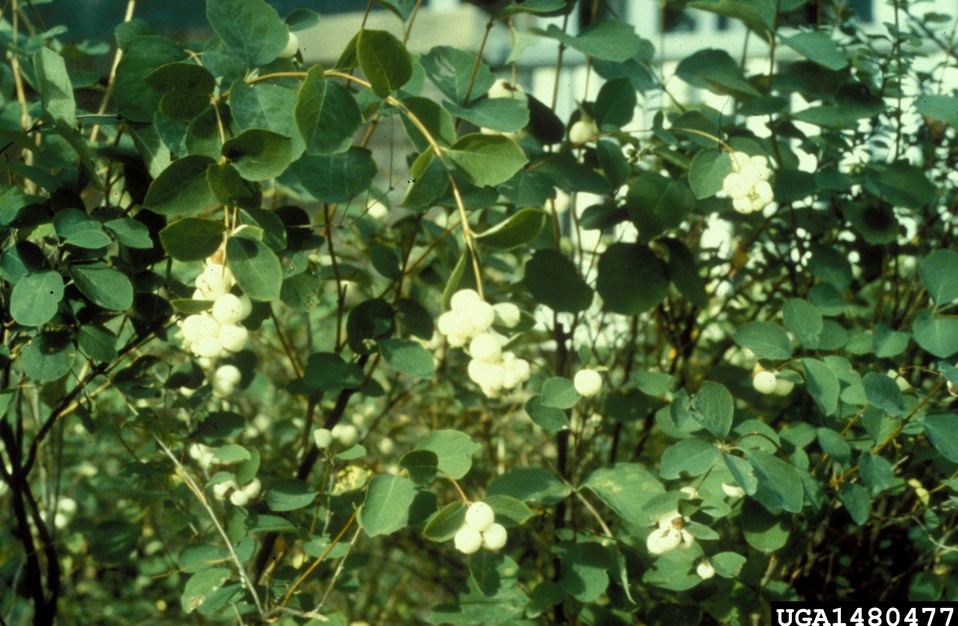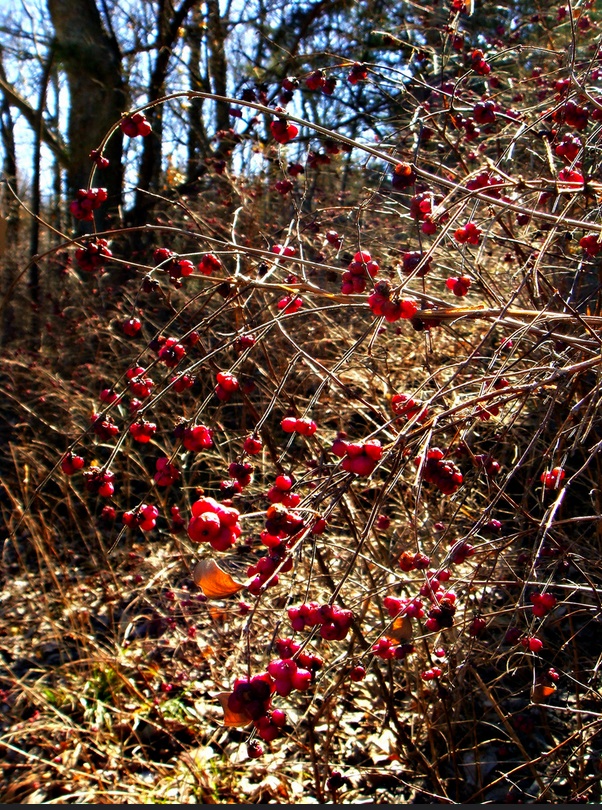With fall in full swing, Thanksgiving will be here before we know it. The plants are becoming dormant and less appealing for the winter months. There are a couple of great plants that we can include in our landscapes to add winter interest and to add habitat and food for wildlife, Coralberry and Snowberry.
Coralberry & Snowberry
Coralberry, Symphoricarpos orbiculatus, and Snowberry, Symphoricarpos albus, are two very closely related small, arching shrubs. Snowberry can grow up to 5 feet tall and coralberry can grow up to 3 feet tall and arch and spread into a nice mound. These plants have small, opposite leaves that are oblong and sometimes have a point on the end of the leaf. The leaves are pubescent, or hairy, on the underside and snowberry leaves are more of a blue-green or gray-green color on the top. The flowers on both species are small and inconspicuous, however on the coralberry they are yellow and on the snowberry they are pink. The fruit, which appears as clusters along the stem, is the reason to plant both coralberry and snowberry. Coralberry produces a small pinkish red berry in October that persists late into the winter months. Snowberry, as the name implies, produces a small white berry in September that persists until November or later.
Chenault Coralberry
This is another option, a hybrid of snowberry and a lesser used pink snowberry, called Symphoricarpos x chenaultii or Chenault coralberry. Chenault coralberry has a nicer arching habit with better fruit set. This hybrid plant also has a variety choice for more of a groundcover option, ‘Hancockii’, or Hancock coralberry. Hancock coralberry only grows up to 2 feet tall with pink flowers and pink or white fruit. Hancock coralberry is also resistant to mildew, which plagues the straight coralberry species.
Growing
Coralberry, snowberry, and the close relatives are all grown well in full sun to part shade, they will tolerate medium shade conditions. They prefer to be grown in dry shade rather than moist shade conditions. They are grown well along buildings in shade or on the edge of tree-lined areas where there is shade but airflow. They will do a great job of naturalizing throughout an acreage and will do well if planted on slopes to help control erosion.
Both coralberry and snowberry are a benefit to the wildlife found on your acreage. Many birds, small mammals, and browsers use these plants for food, cover, and nesting sites, according to The University of Texas at Austin Wildflower Center. The Wildflower Center also records coralberry as attracting large numbers of bees, so it is great for pollinator bees.
Coralberry and Snowberry are great choices for any landscape. They can take quite a lot of shade or sun conditions and they are a great asset to wildlife for food and habitat. If you are looking for more of a groundcover, or creeping, type of shrub, choose Hancock coralberry for a shorter version that only grows to 2 feet tall. So the next time you are looking to plant a shrub, choose coralberry or snowberry for winter interest.


